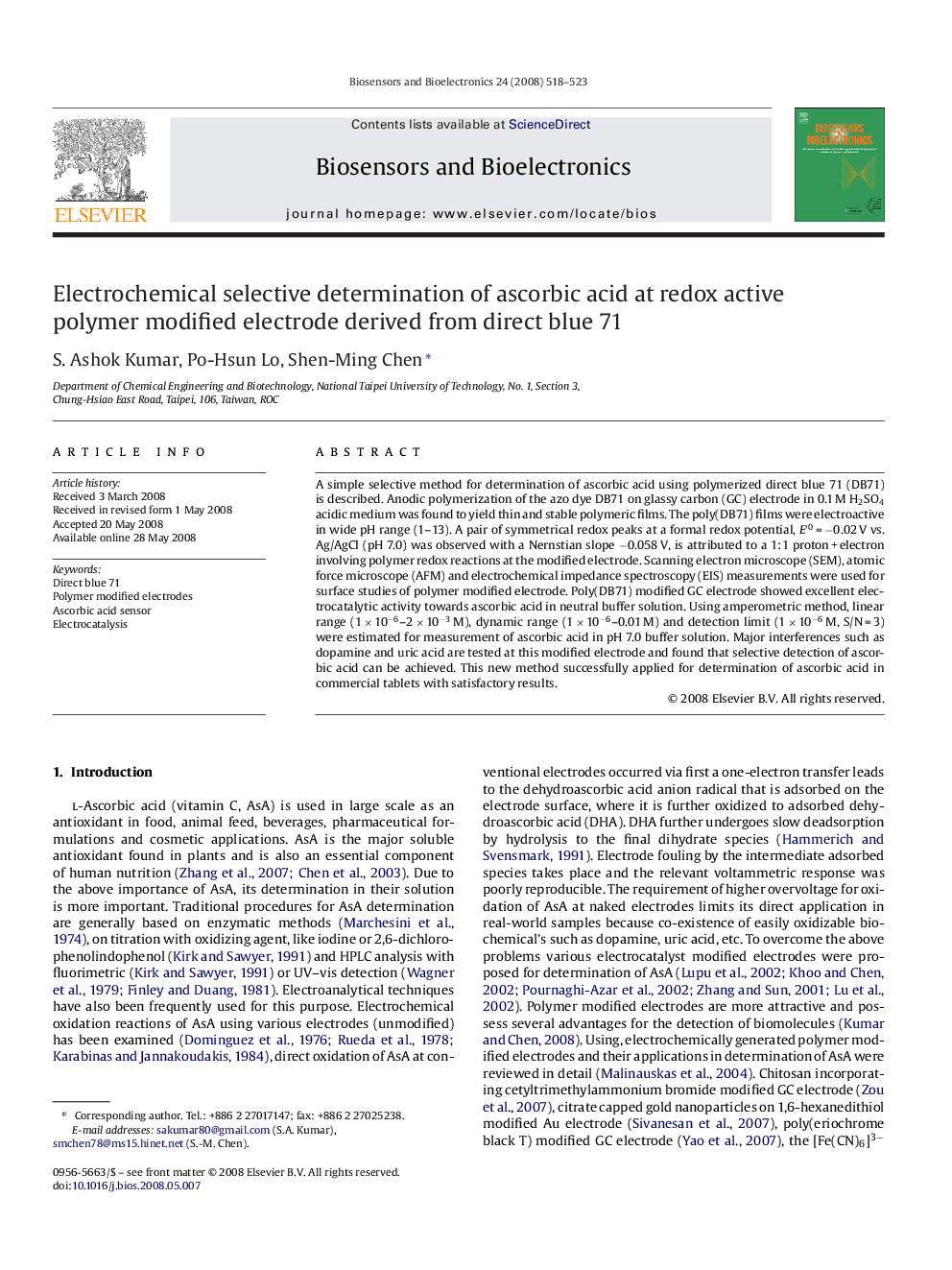| Article ID | Journal | Published Year | Pages | File Type |
|---|---|---|---|---|
| 869853 | Biosensors and Bioelectronics | 2008 | 6 Pages |
A simple selective method for determination of ascorbic acid using polymerized direct blue 71 (DB71) is described. Anodic polymerization of the azo dye DB71 on glassy carbon (GC) electrode in 0.1 M H2SO4 acidic medium was found to yield thin and stable polymeric films. The poly(DB71) films were electroactive in wide pH range (1–13). A pair of symmetrical redox peaks at a formal redox potential, E′0 = −0.02 V vs. Ag/AgCl (pH 7.0) was observed with a Nernstian slope −0.058 V, is attributed to a 1:1 proton + electron involving polymer redox reactions at the modified electrode. Scanning electron microscope (SEM), atomic force microscope (AFM) and electrochemical impedance spectroscopy (EIS) measurements were used for surface studies of polymer modified electrode. Poly(DB71) modified GC electrode showed excellent electrocatalytic activity towards ascorbic acid in neutral buffer solution. Using amperometric method, linear range (1 × 10−6–2 × 10−3 M), dynamic range (1 × 10−6–0.01 M) and detection limit (1 × 10−6 M, S/N = 3) were estimated for measurement of ascorbic acid in pH 7.0 buffer solution. Major interferences such as dopamine and uric acid are tested at this modified electrode and found that selective detection of ascorbic acid can be achieved. This new method successfully applied for determination of ascorbic acid in commercial tablets with satisfactory results.
